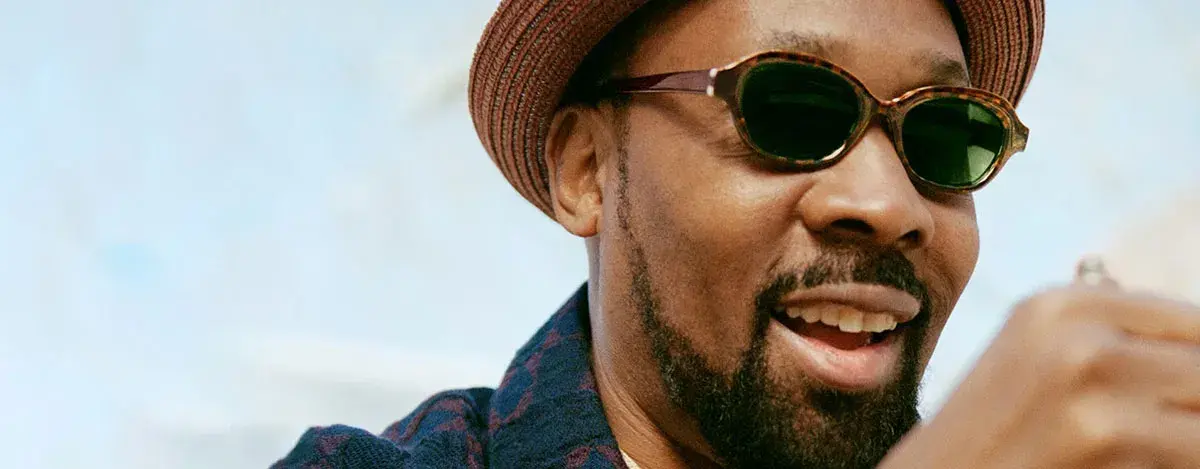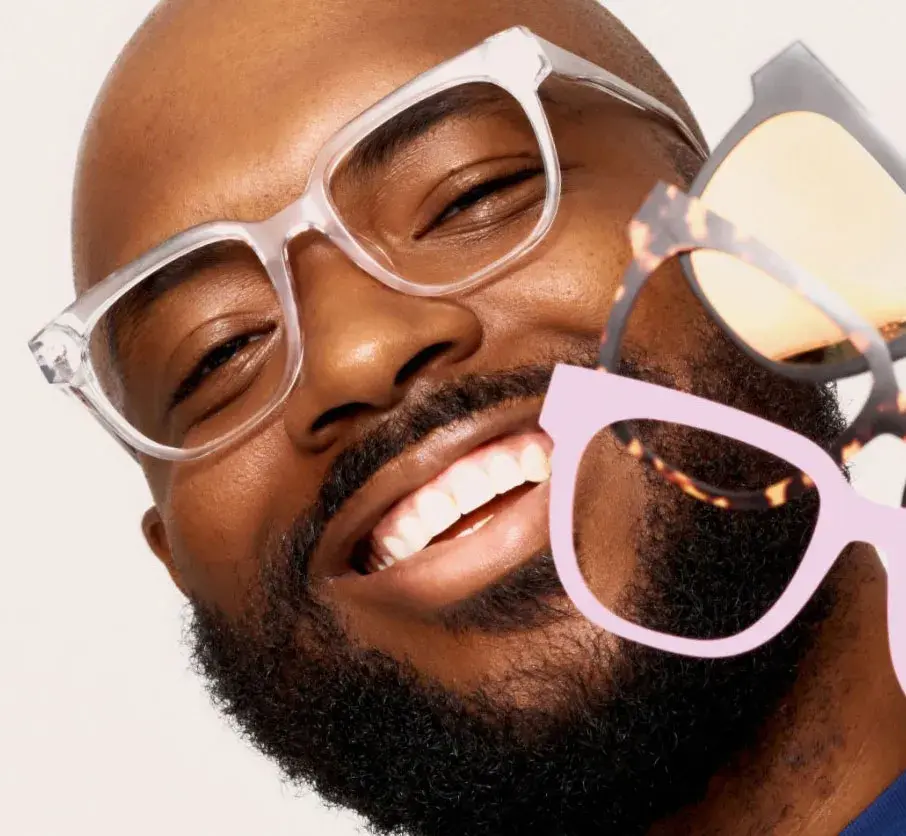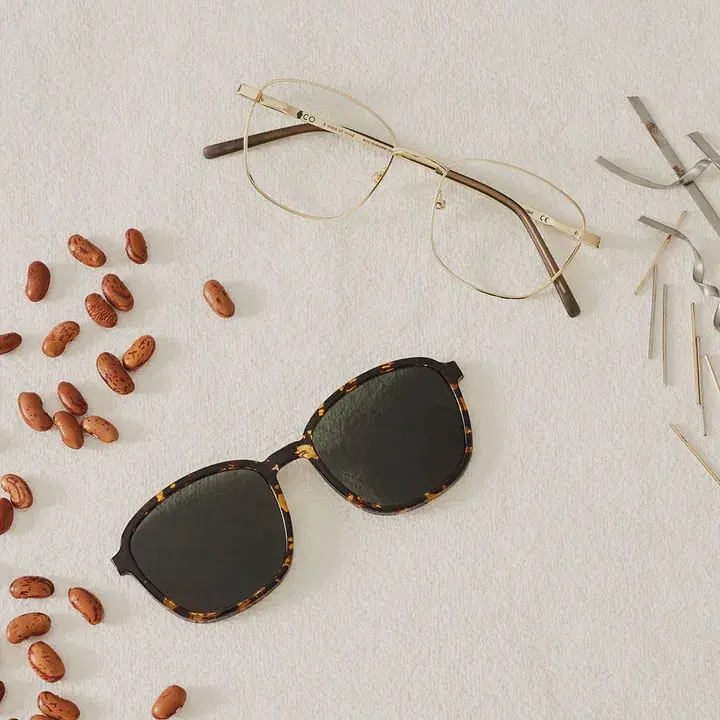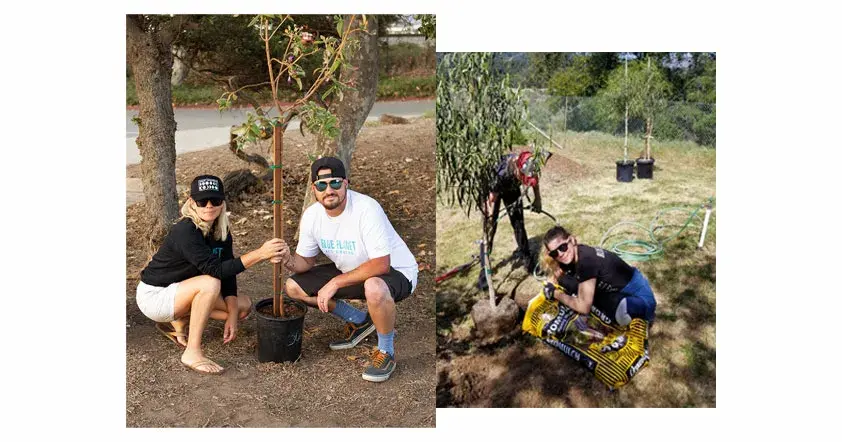Demand-Driven Growth: Analyse brand operations with Four Success Eyewear Brands
Against the backdrop of a traditional eyewear industry dominated by conglomerates and brick-and-mortar channels, a new generation of brands has successfully disrupted the market landscape through DTC (Direct-to-Consumer) models and e-commerce platforms like Shopify. By implementing innovative business models, precision-targeted marketing strategies, and differentiated user experiences, these brands have not only reduced eyewear prices but also significantly enhanced purchasing convenience for consumers.
From Warby Parker's "free home try-on + social impact marketing" to Pair Eyewear's personalized "magnetic frame-swapping" system, OCE's sustainable fashion approach, and Blue Planet's eco-conscious philosophy, these pioneering brands have demonstrated the tremendous potential of online eyewear retail. This article will conduct an in-depth analysis of four distinctive brands' operational models, examining how they achieved differentiation in this highly competitive market while providing actionable insights for entrepreneurs.
The Industry Disruptor: Warby Parker's DTC Innovation
Warby Parker stands as the archetypal DTC pioneer that fundamentally transformed the eyewear industry's competitive landscape. Founded in 2010 by four Wharton School graduates in New York, the brand originated when co-founder Dave Gilboa lost his $700 Prada glasses during a trip to Thailand, prompting him to question why prescription eyewear carried such exorbitant price tags. Their market research revealed that Italian conglomerate Luxottica maintained near-total vertical integration across the industry's supply chain. This discovery led to Warby Parker's establishment, employing a DTC model to bypass traditional distribution channels and offer premium frames at $95—half the price of Ray-Ban's entry-level models at $200.
Warby Parker's success stems from its revolutionary pricing architecture. By maintaining an in-house design team, the brand avoided costly licensing fees associated with designer labels. Utilizing premium Italian acetate while manufacturing in China optimized production costs, while predominantly digital distribution dramatically reduced brick-and-mortar overhead. This cost structure optimization enabled the company to deliver high-quality products at 20% of traditional retail prices, achieving 100,000 unit sales in its inaugural year.

The brand's user experience innovation proved equally transformative. When launched, only 1% of U.S. eyewear purchases occurred online due to consumers' preference for in-person fittings. To overcome this barrier, Warby Parker introduced its Home Try-On program: customers could select five frames for complimentary five-day trial, with free return shipping. Though operationally expensive, this risk-free sampling mechanism significantly lowered purchase barriers while generating organic word-of-mouth marketing as wearers showcased trial frames within their social circles.
The company developed sophisticated virtual try-on technology, allowing users to upload photos or use real-time camera feeds to visualize frames. This solution became an industry standard emulated by subsequent DTC entrants. Warby Parker's service excellence extended to post-purchase support, featuring optometrist-reviewed orders, 10-day delivery windows, and hassle-free returns—all with prepaid shipping. This frictionless experience rapidly established consumer trust.
Brand narrative and corporate social responsibility formed strategic cornerstones. Founders consistently emphasized their David-versus-Goliath origin story, while their partnership with VisionSpring implemented a "Buy a Pair, Give a Pair" program donating over one million glasses globally by 2023. This conscious capitalism approach resonated powerfully with millennial consumers.
Channel strategy evolved from pure-play e-commerce to an omnichannel approach. Since opening its first physical location in 2013, Warby Parker has expanded to 145 retail stores that serve as brand experience centers rather than mere transaction points. This hybrid model successfully balances DTC efficiencies with tactile consumer experiences.
Warby Parker's ecosystem integrates disruptive economics, seamless UX, emotional branding, and channel diversification—a blueprint that propelled its growth from startup to industry leader.
Pair Eyewear : The perfect combination of modular design and TikTok marketing
After Warby Parker successfully opened up the online eyewear market, a wave of more niche-focused DTC eyewear brands emerged, with Pair Eyewear standing out as a prime example by differentiating itself with its "interchangeable frames" feature. Founded in 2017, Pair Eyewear targeted a key pain point in the eyewear industry—low repurchase rates. Most people wear a single pair of quality glasses for years, often continuing to use them even when the lenses are scratched, only replacing them when damaged. This low consumption frequency results in extremely low repurchase rates for eyewear, making it difficult for traditional business models to break through. Nathan, the founder of Pair Eyewear, has worn glasses since the age of eight and felt that glasses, like "medical devices," suppressed personal expression. After interviewing hundreds of children and adults with his Stanford alumna Sophia, he confirmed this was a widespread issue, leading to the birth of Pair Eyewear's innovative concept.
Pair Eyewear's core innovation lies in its modular design: users can purchase a $60 base frame and then buy $25 magnetic "Top Frames" at any time to change the look. This design essentially creates multiple "skins" for glasses, allowing users to switch styles as easily as changing clothes—perfectly solving the problem of low repurchase rates for durable eyewear. The founders revealed that the average user owns five magnetic frames, while some super-users even own more than 90, completely transforming the business logic of the eyewear category.
Pair Eyewear's product strategy evolved from initially targeting children to expanding into all age groups. In its early days, the brand focused on kids, who crave novelty and fun and are more willing to change their glasses daily like outfits. However, as the business grew, Pair Eyewear discovered that 60% of sales came from adult consumers, yet its product line lacked sufficient adult-friendly styles. Using funding to expand its offerings, the brand introduced more adult designs, naturally broadening its customer base. Today, Pair Eyewear categorizes its products into two main types—eyeglasses and sunglasses—and further segments them into men's, women's, and kids' lines, forming a comprehensive product matrix.
To ensure an exceptional product experience, Pair Eyewear assembled a strong design and manufacturing team. The brand hired Lee Zaro, former Head of Product Design at Warby Parker, as its Design Director—the mastermind behind the current magnetic interchangeable frame system.
Pair Eyewear's user co-creation model is particularly noteworthy. The brand developed a program that converts digital design files into physical frames, enabling collaborations with major IPs like Marvel, Harry Potter, Sesame Street, and the NBA. To date, Pair's frame skins have expanded into ten licensed collections, four limited-edition series, and five regular series. This extensive selection not only satisfies consumers' desire for personalization but also creates ongoing purchase incentives. Pair also built a Facebook community with over 20,000 members, where new posts appear daily. This community serves not only as a customer service platform but also as a source of product inspiration—users sharing photos of their frames seeking attention directly inspired the brand's UGC (user-generated content) marketing strategy on TikTok.
In terms of marketing, Pair Eyewear excels. The brand heavily leverages UGC content on TikTok, with its official account filled with videos of customers showcasing their frames, often tagged with branded hashtags (e.g., the brand name or collection name). In late 2021, Pair hired a Growth Director specializing in influencer marketing, launching coordinated campaigns on YouTube and TikTok and positioning influencer collaborations as a key driver for future traffic growth. On Facebook—its earliest social media platform—Pair not only posts product content but also operates a Facebook Shop, turning the account into a dual-purpose customer service and sales channel. For Instagram and Pinterest, Pair adopts bright, cheerful color schemes that align with its brand identity, appealing to young, individuality-seeking consumers.
Pair Eyewear also invests heavily in search traffic acquisition. The brand allocates an estimated $50,000 monthly budget to paid search, generating over 36,000 clicks, primarily targeting keywords like "eyeglasses," "eyeglasses online," and "prescription glasses online." Its website SEO is meticulously optimized: the blog section publishes numerous professional articles covering frame styles, lens choices, and educational content; high-quality backlinks are established through business media, eyewear journals, and fashion blogs, categorized into business model breakdowns, styling guides, and product showcases. This comprehensive content marketing strategy helps Pair maintain a strong position on search engine results pages (SERPs).
Building social responsibility is another critical aspect of Pair Eyewear's branding. Partnering with The Eyelliance, the brand provides glasses and vision care for children in developing countries, upholding its pledge: "For every pair sold, a pair is given to a child in need." In an era where consumers increasingly value corporate social responsibility, such initiatives are not just marketing highlights but also vital for establishing brand trust.
ECO EYEWEAR: Sustainable Vision Meets Stylish Innovation
ECO EYEWEAR is a brand dedicated to sustainability and eco-friendly principles, combining environmentally conscious materials with fashionable aesthetics in its product designs. While the search results did not provide a complete profile of a brand directly named "ECO EYEWEAR," insights can be drawn from related brands and products in the field to outline its key characteristics and industry trends.
In terms of material selection, ECO EYEWEAR-type brands typically use bio-based or recycled materials. For example, TBD Eyewear employs bio-acetate frames made from cotton and wood pulp fibers, while its lenses incorporate bio-based materials derived from natural carbon sources, even offering biodegradable demo lenses. Evonik’s Trogamid myCX eCO, a transparent bio-based polyamide containing 40% renewable raw materials, is used in high-end sunglass lenses. This material is produced entirely using renewable energy, reducing its carbon footprint by 50%. The Italian Safilo Group has adopted this innovative material for BOSS sunglass lenses.
Eco-conscious packaging is another hallmark of such brands. TBD Eyewear uses cases made from cotton and recycled PET, with cleaning cloths crafted from recycled PET plastic and packaging boxes made from FSC-certified recycled paper. Similarly, Riley’s STREAM EVO ECO safety glasses eliminate single-use plastic packaging entirely, opting instead for 100% recyclable microfiber bags.
In design, these brands often embrace minimalist and elegant aesthetics. The Swedish brand EOE Eyewear, for instance, draws inspiration from the pristine beauty of Swedish Lapland, featuring ultra-simple designs while employing fully sustainable production techniques and biodegradable materials. TBD Eyewear’s products have also garnered consumer praise for their refined craftsmanship and comfortable wear, with one user describing them as "well-made and stylish," even becoming an "unofficial ambassador" for the brand.
Market positioning for ECO EYEWEAR brands typically emphasizes "sustainability without compromising quality." Evonik highlights that its bio-based polyamide matches traditional materials in transparency, mechanical performance, and stress crack resistance. Similarly, TBD Eyewear assures customers that its commitment to sustainability never comes at the expense of product quality.
Consumer feedback indicates strong market reception for these eco-friendly glasses. Multiple TBD Eyewear products have received high ratings, with one buyer stating, "This is my second pair of TBD sunglasses," praising their "excellent comfort and bold yet thoughtful design." Another user specifically noted the "exceptional build quality, easily surpassing several high-end brands I own."
Overall, modern ECO EYEWEAR-type brands are driving the eyewear industry toward greater sustainability through material innovation, production processes, and packaging design—all while maintaining fashion appeal and high-quality standards.
A million Annual Revenue Brand Driven by Sustainability
Blue Planet is an e-commerce brand specializing in eco-friendly eyewear, built on Shopify with annual revenues exceeding million and an impressive 32% return on investment (ROI). Its success lies not only in financial performance but also in seamlessly integrating environmental values with a profitable business model.
In Product Strategy and Brand Positioning , Blue Planet’s core brand philosophy revolves around creating sustainable eyewear using recycled materials such as glass lenses, plastics, and metals. Its innovative "waste-to-product" approach repurposes excess materials from the Blue Gem series into new sunglasses and reading glasses, reducing costs while appealing to eco-conscious consumers.
The brand offers approximately 94 unique designs across sunglasses and reading glasses, with reading glasses significantly outperforming sunglasses in sales due to higher repurchase rates—customers often buy multiple pairs for different occasions or prescription updates.
In supply chain and production management, Blue Planet sources from six key suppliers in Thailand and China, with founder Matt Lawenda conducting annual factory audits. The brand follows a cautious supplier onboarding strategy: starting with small trial orders to assess reliability before scaling. Lawenda advises entrepreneurs: "Never allocate all your capital to a single supplier initially—always have a backup plan."
Omnichannel Expansion ,While Shopify remains its core platform, Blue Planet successfully expanded into wholesale distribution three years ago, partnering with retailers like Lulu Boutiques and Soft Surroundings. This hybrid model enhances brand visibility and profitability.
in the marketing strategy, Google Ads and email marketing are Blue Planet’s top traffic drivers. The brand leverages Google’s Traffic Booster for ad performance tracking and employs email campaigns to share its sustainability story and promote new arrivals.A standout tactic is its promotional wheel pop-up, where visitors exchange email addresses for discount coupons or free giveaways. Unlike aggressive sales emails, Blue Planet focuses on value-driven content to nurture leads. Post-purchase, automated emails request reviews and include time-sensitive discount codes, boosting repeat purchases.
Blue Planet has established two primary social impact initiatives: First, donating its commercially available eyewear to underserved populations, with cumulative donations reaching approximately 850,000 pairs. Second, partnering with Direct Relief to provide emergency relief kits containing eyewear during natural disasters.Additionally, the organization voluntarily conducts community volunteer programs including road reconstruction projects, stray animal care initiatives, and tree-planting campaigns. These comprehensive corporate social responsibility (CSR) measures have significantly enhanced the brand's social reputation and consumer goodwill.
Blue Planet exemplifies how sustainability and profitability can coexist, offering lessons in omnichannel strategy, supply chain prudence, and mission-driven marketing.
The success of these eyewear brands proves that DTC models and Shopify’s e-commerce infrastructure offer powerful tools to break down traditional industry barriers. Whether through customer-centric try-on programs, innovative product design, or data-driven social media marketing, these brands have mastered the art of building deep consumer connections. Looking ahead, advancements in AR/VR virtual try-on technology and growing demand for personalized, sustainable products will further expand the market’s potential. For aspiring entrepreneurs, adopting core strategies from these case studies—such as optimizing UX, crafting compelling brand narratives, and leveraging performance marketing—will be key to achieving scalable growth,and the end of these is always the needs of customers